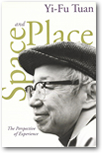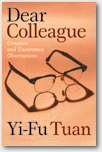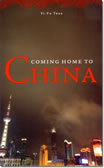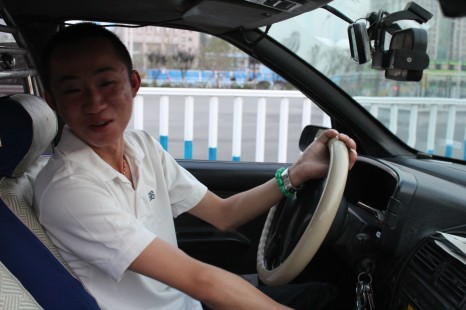The CD was composed of American commercial rap and r&b sped up and seamlessly mixed into one-hour mp3’s. He used this pulsing and unrelenting rhythm to fuel his wild progress, despite the near opacity of the lyrics to his ears. Young and tidy, with glistening hair and a craggy cheek surface formed of the new sustenance, he was an image of youth, an animation of the performance of youth under pressures. We climbed in and with the door’s closure, an easygoing promise of timely delivery and an immediate u-turn in front of an oncoming bus set a tone for a sequence of negotiations and split-second decisions informed by flowing intuition. This pointed awareness did not count the law chiefly as its limit, working along its approximate guidelines, but hovering in a parallel state where speed and safety are blurry, immeasurable energies constituting pure duration. Looking at the license on the dashboard, one noted an older, pale, balding man gazing back; the spirit and attitude of driving had either rejuvenated an adult, or made an adult of a boy. The maneuvers, which included burst-passing on the narrow 2-lane causeways that elegantly cross-hatch the edges of East Lake, cutting corners early shadowing mini-vans, and swerving around piles of debris, not to mention hurtling past other speeding cars on the new elevated freeways, all made up a language of an urban space that sprang up and lay half-destroyed and half-in-progress. As such, it was not the code of a single person, though he is the atomic driver in an incalculable system of circulation and friction; but he can only be the atom in tension with the particles exploding around him. Even the pedestrian on the rubble margin senses the shifting values and instant momentum transformations, adjusting to this general spatial intelligence with minimal violence; the other drivers play variations on each other’s motions, together developing the chaotic vocabulary that oscillates between efficiency and entropy, creating such tropes as the cautioning head-lamp flicker and the selfish congesting lane-take. Just like the tireless and carnal mp3 soundtrack accompanying the sequence to its end, these signifying gestures don’t accumulate toward a thesis, but in their isolation gradually chip away at time, leaving us dizzy and early, present, in front of the Hankou train station. There are no straight roads, and in Wuhan, the atomic driver must hustle space with the will of an unstable citizen.
Posts tagged ‘geography’




The next meeting of the Happy Friends Reading Club will take place in an uninhabited hutong near the South entrance to Nan Luoguxiang. The discussion is taken from a chapter from one of Yi-Fu Tuan‘s earliest publications, Space and place: the perspective of experience. Download the chapter “Attachment to Homeland” here [PDF, 9.5mb], and the book’s Epilogue there [PDF, 1mb].
We are meeting on the corner at the South entrance to Nan Luoguxiang on Sunday at 2:45pm and will proceed to the location from there. We will head over there, too, anyone is welcome to join, just be on time so that we can head to site. If there are any problems, please phone Mr. Eddy at 15001127304.
For further reading, try aaaaarg‘s Yi-fu Tuan essay collection.
 时间 posted on: 4 February 2010 |
时间 posted on: 4 February 2010 |  发布者 author: e |
发布者 author: e |  comment (1) |
comment (1) |
[Bea, just came across this press release, thought it looked very interesting and relevant for us…]
Experimental Geography
A traveling exhibition organized by iCI, New York
Touring September 2008 through August 2010
Curated by Nato Thompson
iCI announces the tour of Experimental Geography, an exhibition that explores the distinctions between geographical study and artistic experience of the earth, as well as the juncture where the two realms collide and possibly make a new field altogether. The exhibition presents a panoptic view of this new practice through a wide range of mediums including interactive computer units, sound and video installations, photography, sculpture, and experimental cartography created by 18 artists or artist teams from six countries.
Experimental Geography, curated by Nato Thompson and organized and circulated by iCI, will premiere at the Richard E. Peeler Art Center, DePauw University, Greencastle, Indiana, on September 19 where it will be on view through December 12, 2008. The exhibition will travel through August 2010 with presentations at the Rochester Art Center, Rochester, Minnesota, February 7 – April 18, 2009; The Albuquerque Museum, Albuquerque, New Mexico, June 28 – September 20, 2009; and the Colby College Museum of Art, Waterville, Maine, February 21 – May 30, 2010. Additional venues will be announced.
Geography can involve the study of specific histories, sites, and memories. Every estuary, landfill, and cul-de-sac has a story to tell. The task of the geographer is to alert us to what is directly in front of us, while the task of the experimental geographer—an amalgam of scientist, artist, and explorer——is to do so in a manner that deploys aesthetics, ambiguity, poetry, and a dash of empiricism.
The manifestations of “experimental geography” (a term coined by geographer Trevor Paglen in 2002) run the gamut of contemporary art practice: sewn cloth cities that spill out of suitcases, bus tours through water treatment centers, performers climbing up the sides of buildings, and sound art of the breaths exhaled in running the evacuation route of Boston. In the hands of contemporary artists, the study of humanity’s engagement with the earth’s topography becomes a riddle best solved in experimental fashion.
The approaches used by the artists featured in Experimental Geography range from a poetic conflation of humanity and the earth to more empirical studies of our planet. Ilana Halperin melds immediate physical and personal actions with geologic contexts; she offers poetic conflations of differing fields of interest. Creating projects that are more empirically minded, the Center for Land Use Interpretation (CLUI), a research organization, explores the nature and extent of human interaction with the earth’s surface, embracing a multidisciplinary approach to fulfilling its mission. Using skill sets culled from the toolbox of geography, the work re-familiarizes the viewer with the overlooked American landscape including man-made islands, submerged cities, traffic in Los Angeles, and the broadcast antennas in the San Gabriel Mountains, and other details drawn from everyday experience.
——–
Artists in exhibition (good list of some people maybe we can look into, and a few notes from me about the few people whose works I’ve seen before…)
Francis Alÿs (i like very much!! work kind of psychogeographic in a way, lots of walking in the city…)
AREA Chicago
The Center for Land Use Interpretation
The Center for Urban Pedagogy (CUP)
kanarinka (Catherine D’Ignazio)
e-Xplo
Ilana Halperin
Lize Mogel
Multiplicity
Trevor Paglen
Raqs Media Collective (based in Delhi, an amazing installation I saw in Brussels once dealing with archiving the objects of stateless people, or people in transit…very very good work)
Ellen Rothenberg
Spurse
Deborah Stratman
Julia Meltzer and David Thorne
Daniel Tucker (project organizer) The We Are Here Map Archive
Alex Villar
Yin Xiuzhen (just saw images of her work from a fair in Berlin, and then one sculpture at the Shanghai Art Fair, which I wouldn’t have imagined as being relevant to this show but the piece in Berlin had a very nice idea of the building up of space by means of production and labour in a clothing factory-like setting)
 时间 posted on: 18 September 2008 |
时间 posted on: 18 September 2008 |  发布者 author: e |
发布者 author: e |  comment (1) |
comment (1) |


 分类 filed under:
分类 filed under: 